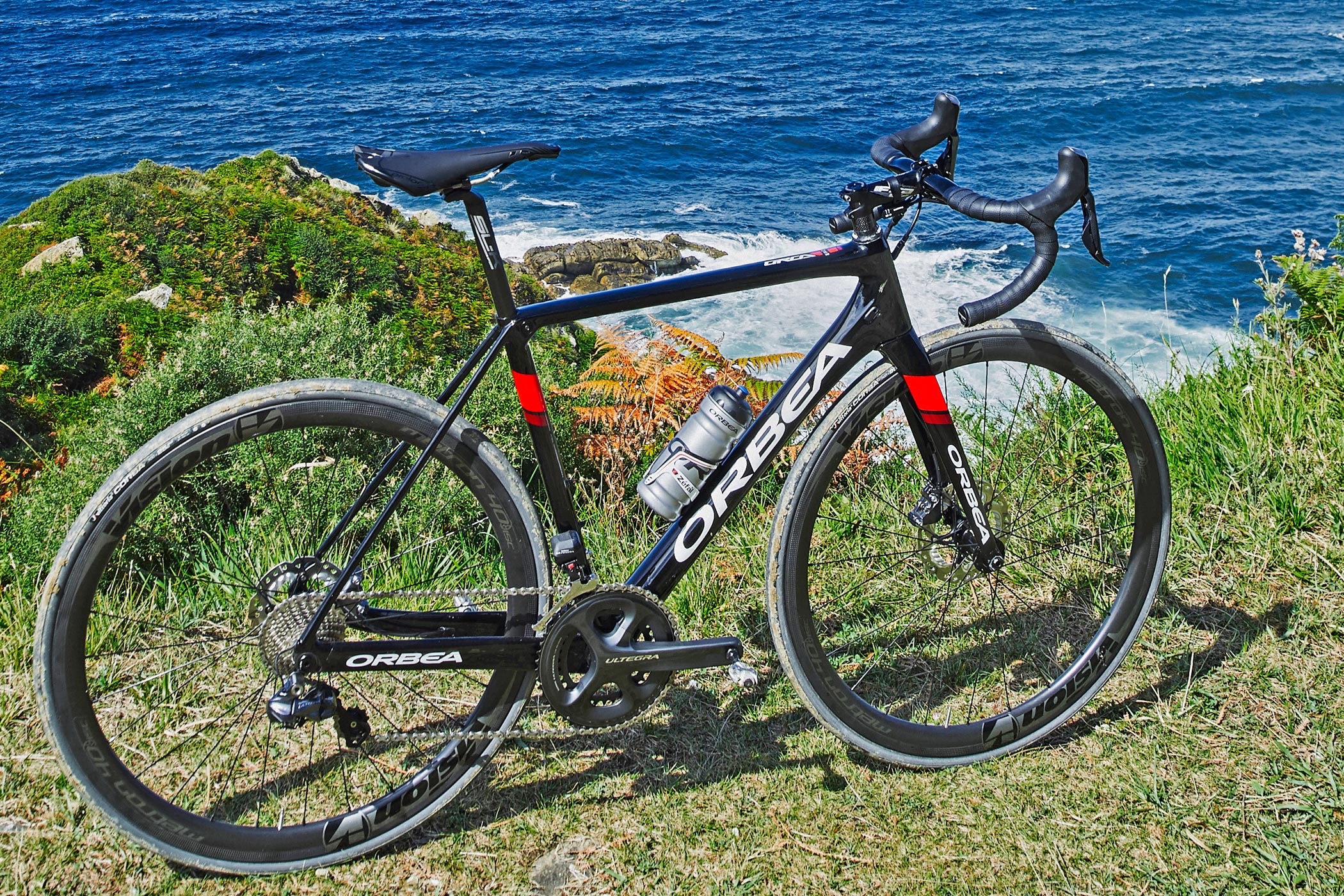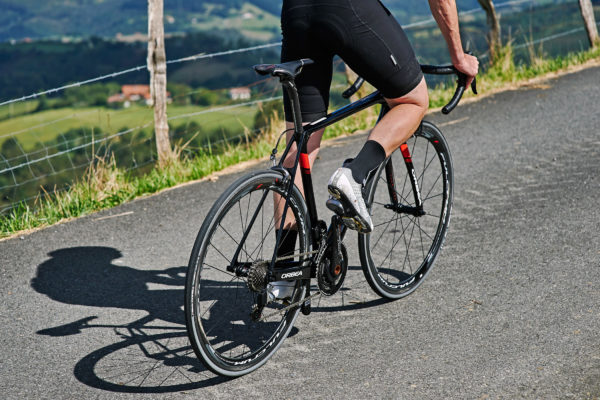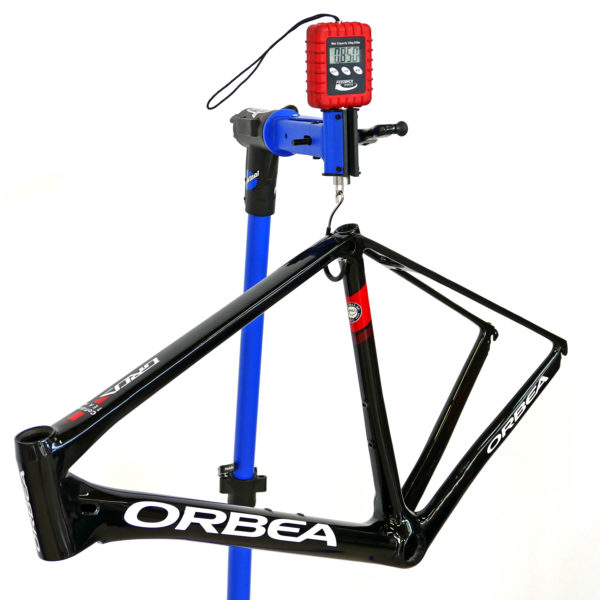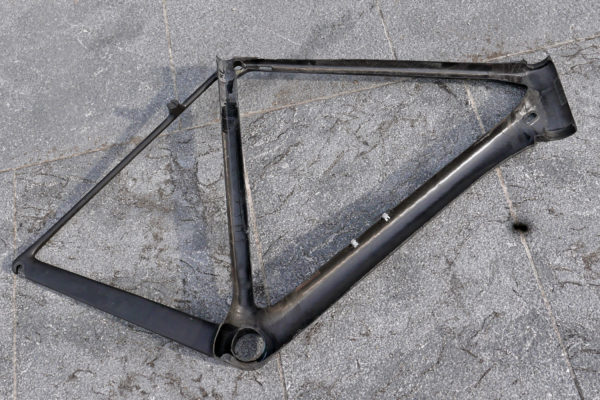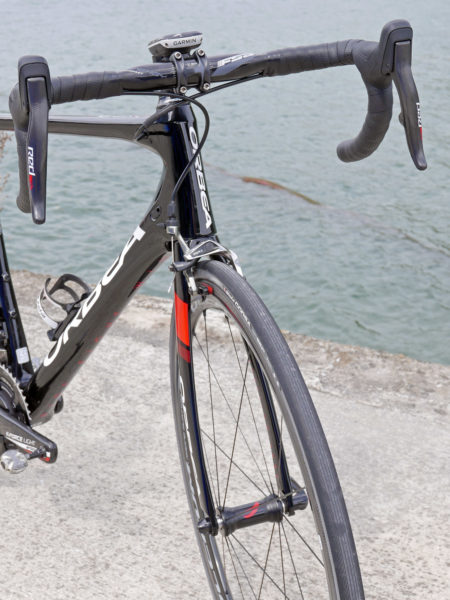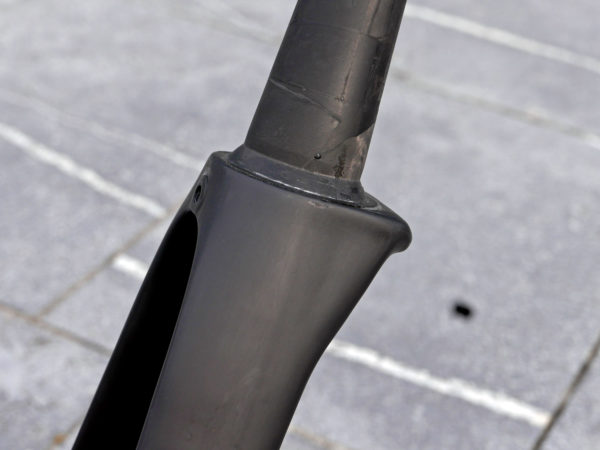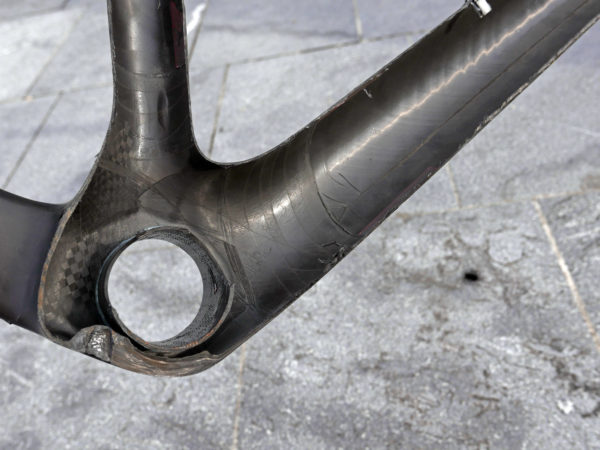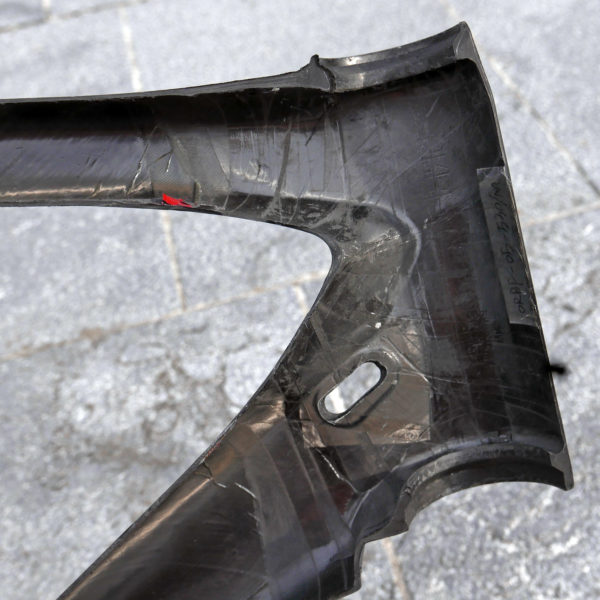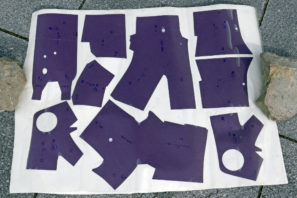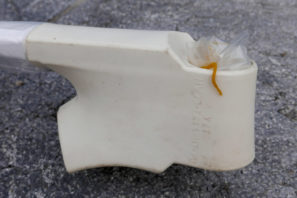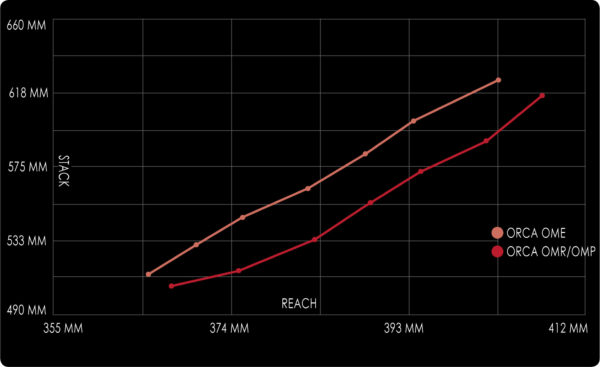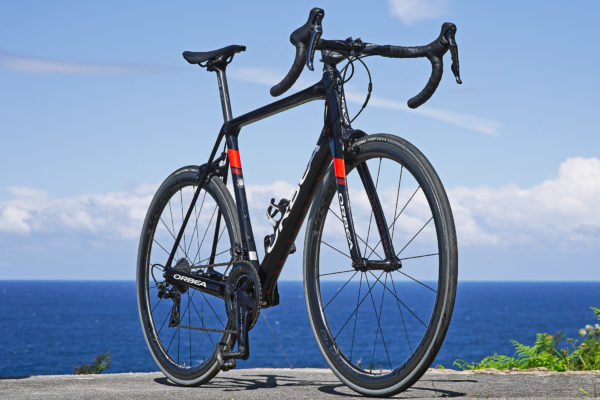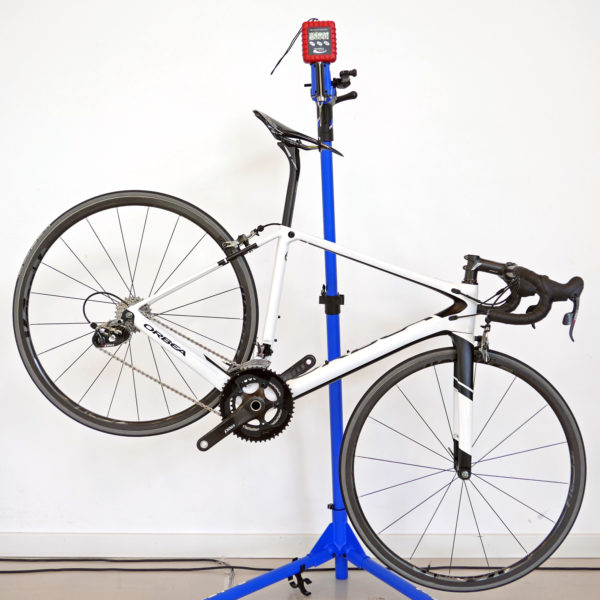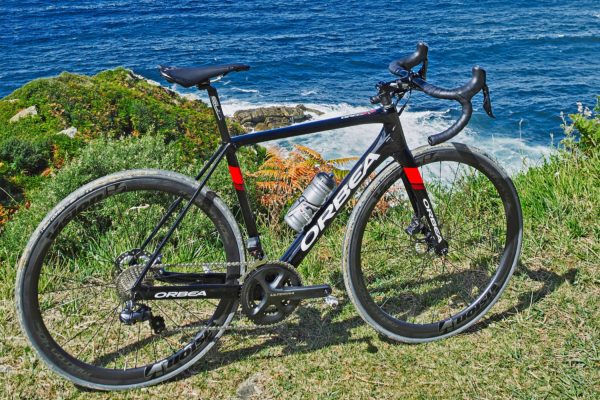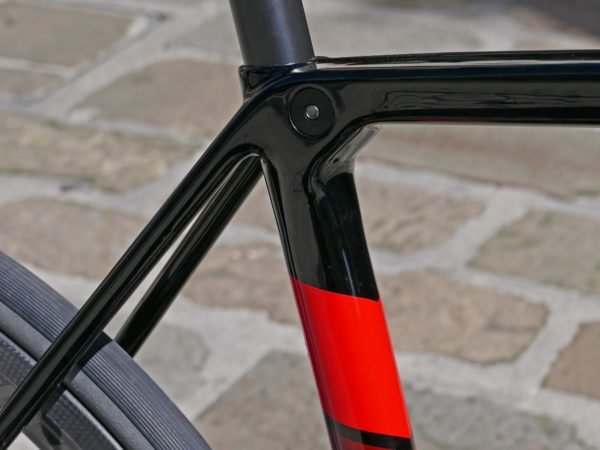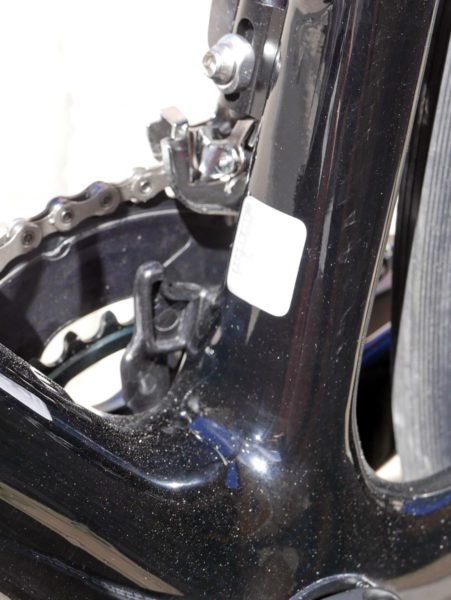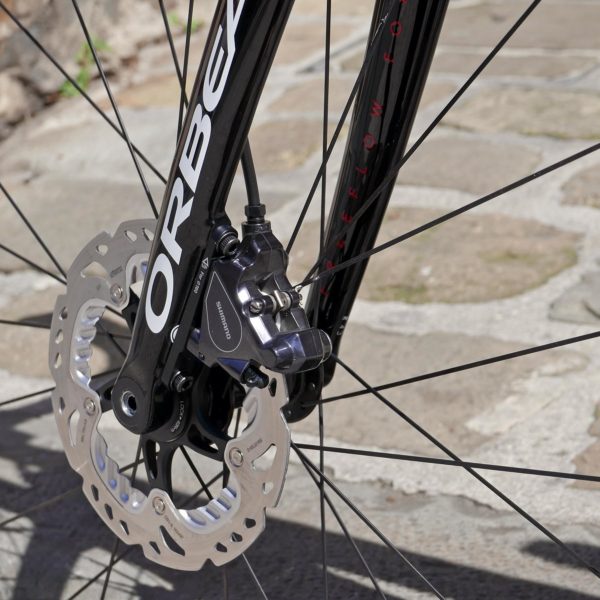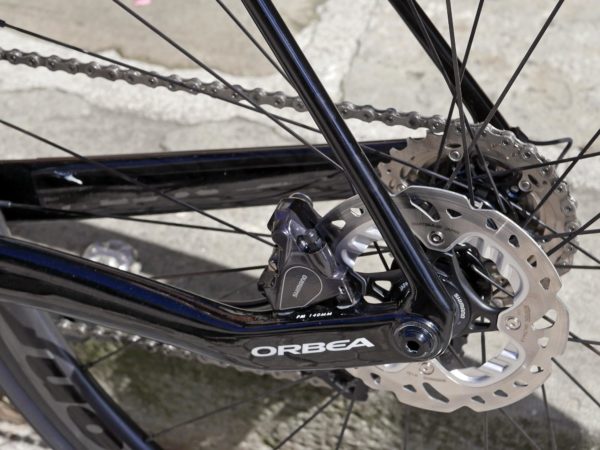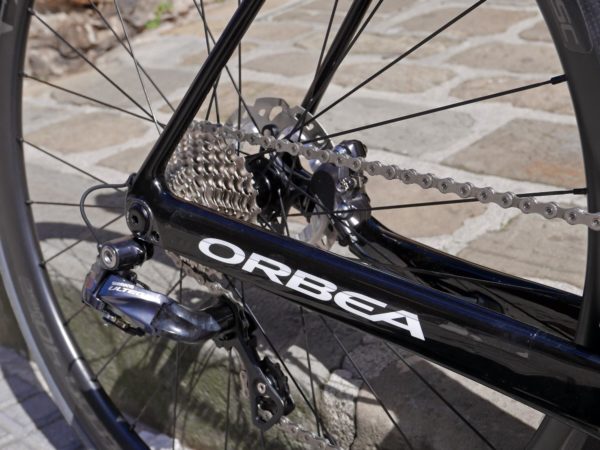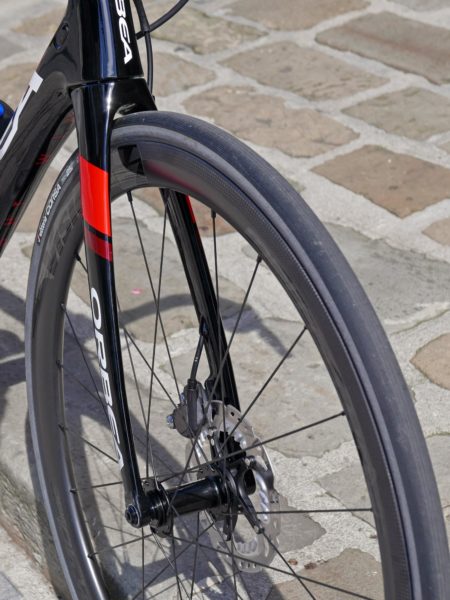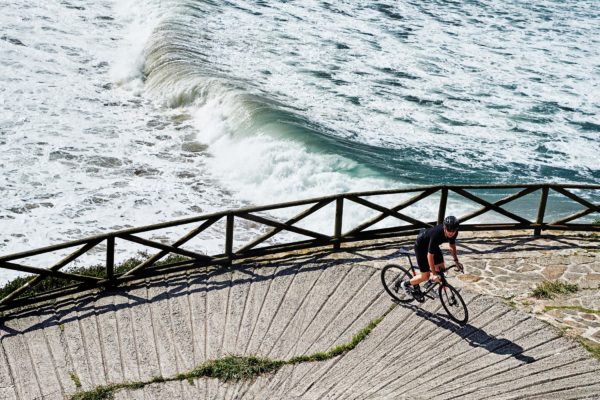We saw the preliminary details on the newest generation of Orbea’s flagship Orca road race bike back when it had a soft launch ahead of the Vuelta, but now we’ve had the opportunity to get a much closer look. Plus, we had a preview of the disc brake version of the new Orca ahead of the Spring Classics when the Cofidis team had been poised to race the new bike, but a lot has changed since then. Now we’ve had a chance to spend some time going through the new bikes, in each of its variants, and have a better idea of what makes them tick. Join us below the fold as we take a closer look at the tech details on the rim and disc brake bikes, plus the different levels of the carbon framesets on offer…
Orca
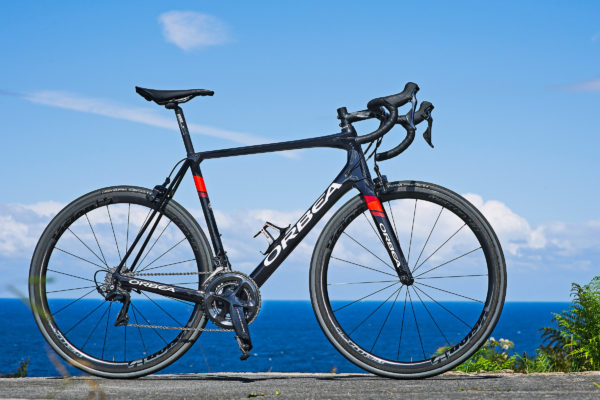
The new Orca gets reshaped from front to back like we saw a little over a month ago for some small weight savings of around 80g, but with a host of performance enhancements. The new rim brake Orca claims a frame weight of 795g (size 53, unpainted) paired with a 315g fork. The new Orca Disc does add a bit to that, coming up to 840g for the frame and another 335g for the fork, but still lighter than the previous rim brake bike.
The reshaping focused on developing a new reinforced backbone for the frame that is stiffer from the tapered headtube, down the oversized downtube, through the PF386 bottom bracket and out the chainstays to the rear wheel. Tube shape got optimized to boost torsional stiffness and big round sections were used in the toptube and headtube for efficient strength in all directions. Another big issue Orbea tried to solve was to better deliver consistent stiffness levels across all frame sizes. Quite often smaller frames end up with the same tubing shapes and thicknesses and are much stiffer than bigger sizes, when the opposite is really needed for larger riders. But at the same time, Orbea says they get more feedback from bigger riders being concerned about weight. So they say they’ve come to a happy medium offering stiffness in the larger bikes that compares more closely to the smaller frames so that they will ride comparably.
Pairing with a stiffer front end and its more responsive ride is a stiffer fork, with the wide set (bow legged) Free Flow legs that Orbea says significantly reduces drag. Free Flow was introduced on their Ordu TT bike and on the new Orca is said to be up to 4 watts faster than the previous design (that amounts to 0.4 sec per kilometer at 40kph.) Orbea reduced the new Orca’s fork legs by 5mm to build it both lighter and stiffer. The resulting fork is claimed to be 26% more laterally stiff and 20% stiffer front-to-back.
At the same time that the backbone stiffened, the top of the frame gets lighter for a more forgiving ride. Orbea feels confident that building a more balanced, smooth rolling bike will result in better traction and faster overall riding. While a lot of the industry has focused on aerodynamics or lightweight and really started to build these hyper specialized bikes, Orbea seems to think that with today’s material and manufacturing technologies, they can build a bike that excels across all of these categories and is both comfortable and a blast to ride and race.
From a geometry standpoint Orbea places a big premium on a quick, responsive race fit on the bike. They weren’t afraid to say that not everyone needs a light race bike. But for those who do, the Orca is uncompromised. The bike puts priority on a short wheelbase, short chainstays, size specific fork offsets, and lower stack & longer reach figures, all building in race-oriented ergonomics to the bike.
In that race geometry, Orbea has made some minor updates for this 5th generation. They’ve changed the trail figures on some of the sizes to maintain the same handling across the range. By better matching fork offset to head angle they can ensure that handling is consistent across all frame sizes. There had previously been a big jump between the 51 & 53cm frames, where the handling would change a lot for riders who could fit on either sizes. They’ve also dropped BB heights by a tiny, but they say measurable 1.5mm for improved control.
Orbea has also standardized chainstay lengths across all frame sizes. Previous Orcas has 3mm shorter stays for the sizes 53cm & below, but now they have given all Orcas the same 408mm chainstays that had been on the larger bikes. That way Orbea says they could ensure that every new Orca could fit up to 28mm tires with still 5mm of clearance on each side at the chainstays.
The Orca now comes in four different variants: 3 different levels of carbon for the rim brake frames, and 1 for the disc brake bike. Orbea isn’t very transparent with how they define these levels, but if you have a closer look at the spec for each bike it will list which frame each complete bike gets. For a quick primer, OMR (Orbea Monocoque Racing) is the top level carbon bike with the big stiffness and light weight claims; OMP (Performance) shares all of the frame shaping and pro race geometry as the top bike with a slightly lower grade carbon to bring the price down; and OME (Evolution) uses the lower grade carbon layup and gets a higher frame stack/reduced reach for a bit more comfort. Essentially the OME carries over the 4th generation frame at a lower price point. Then, for the new Orca Disc, it only come in the OMR version that incorporates all of the best tech, plus improved braking.
Complete weights for the new Orca builds start out at just 5.6kg for the top $7500 rim brake M11LTD with normal Red mechanical, light but standard FSA carbon components, light carbon SLR saddle, and Vision carbon tubulars. That climbs to just 6.2kg with clinchers.
Orca Disc
For the disc brake bike, it uses the same premium 24/30/40T carbon mix as the rim brake OMR bike with the same tubing shaping, and stiffness & smoothness tech, just tailored for disc braking forces. Orbea tells us that they aren’t really that concerned with immediate UCI approval for the pros, as they see the better braking as better performance, and are sure that it will come when the pros are ready. For now the reduced stopping distances and improved stiffness with the addition of thru-axles will be huge gains for amateur cyclists who will buy, ride, and race a new Orca Disc.
Like the top OMR rim brake Orca, the Orca Disc OMR gets the same internal cable routing, integrated hidden seatpost clamp, BB386 EVO, and an integrated headset race where the bearing sits direct onto the carbon of the fork. They also both share the same built-in chain security device that mounts to the seattube to stop dropped chains and also serves to mount a cadence magnet for the likes of SRM power meters.
The new Orca Disc uses flat mount disc brakes and 12mm thru-axles front & rear. We asked Orbea about the early disc brake Orcas that we saw under Cofidis at the start of the year that were running QRs, and we were told that they were pretty much just working with what they had on hand for dropouts at the time, and those bikes were more of conversions to the previous generation Orca, while they were still developing this new bike. (The easiest way to distinguish the gen5 bikes is that integrated seat binder bolt built into the middle of the seat cluster.)
In addition to all of the individual builds that we listed when we first same the Orca soft launch last month, Orbea has their MyO custom paint program that they introduced at the start of the year. In it every one of the 16 OMR bike builds includes free paint customization. That’s 11 rim brake OMR complete bikes and all 5 of the disc brake OMR bikes that let you design the multi-color paint scheme of your choice for no extra fee. Orbea does all of their painting at their main Basque HQ and realized it wasn’t that much harder for them to deliver the improved customized service to their buyers of bikes that sell for about 2600€ and up.
All of the new Orca OMR bikes are said to be available from October 2016, and each comes with the same lifetime warranty offered on all of Orbea’s framesets.
Keep your eyes out for our first impressions riding the bikes…
